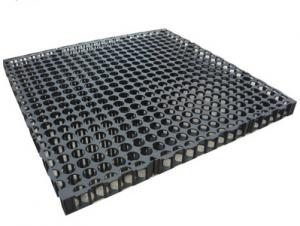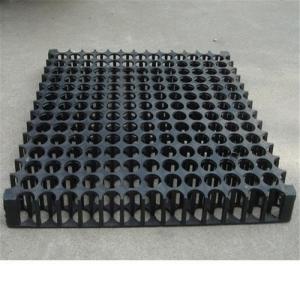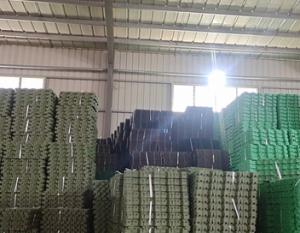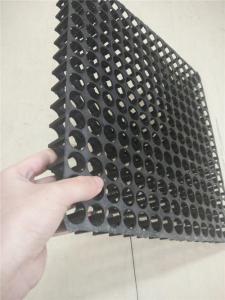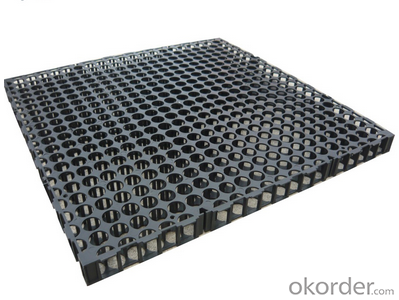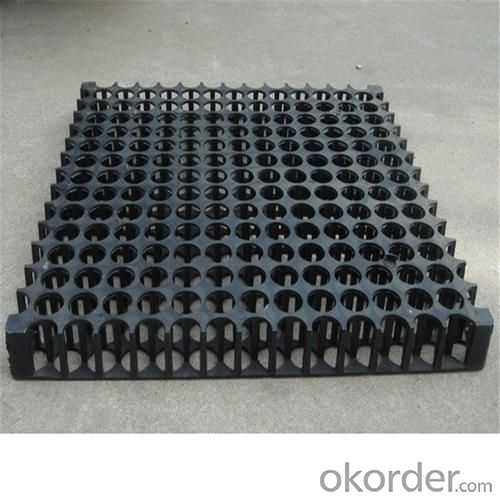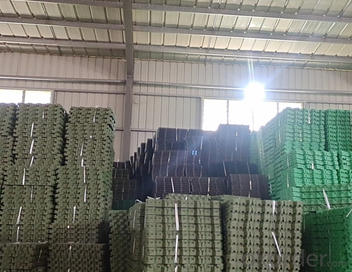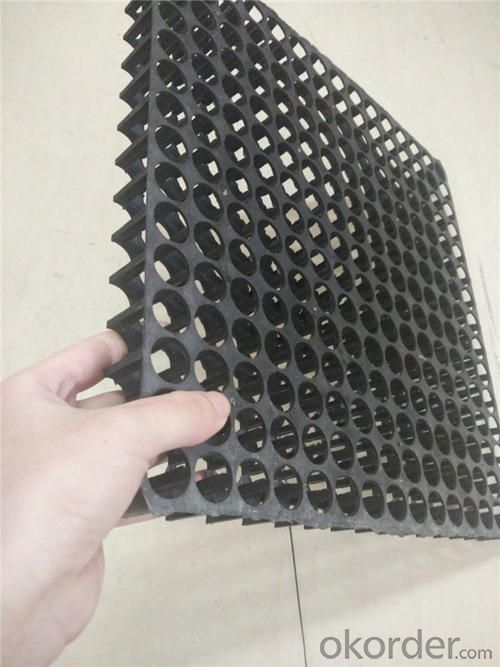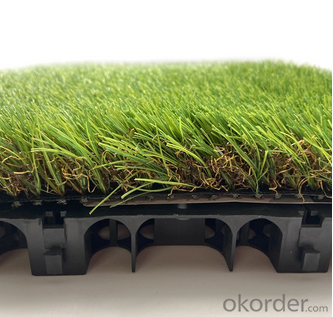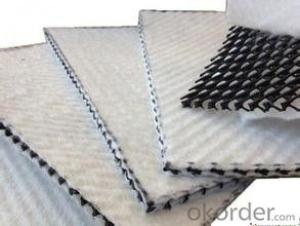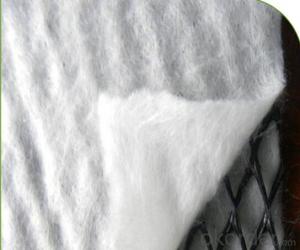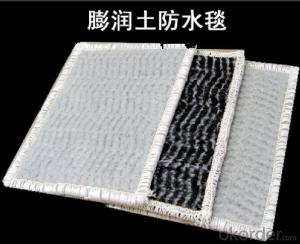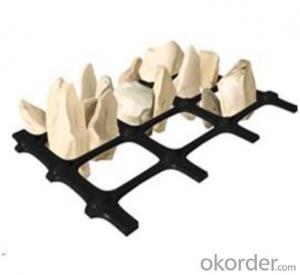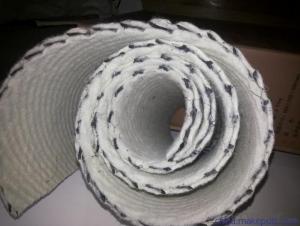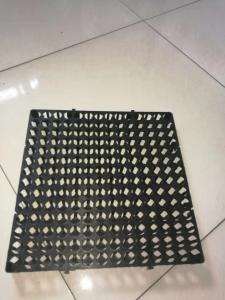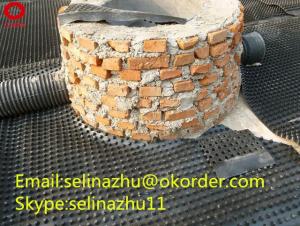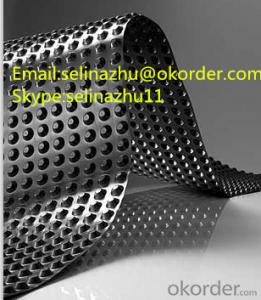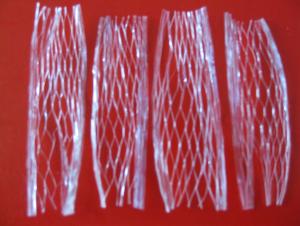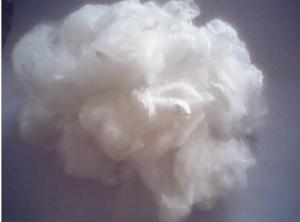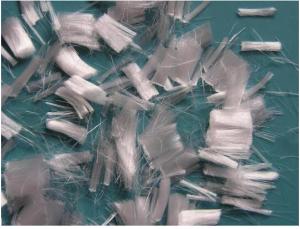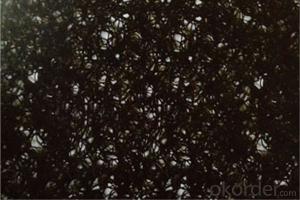Roofing Garden Plastic Drainage Cell Water Filter Board Drainage board
- Loading Port:
- Tianjin
- Payment Terms:
- TT or LC
- Min Order Qty:
- 5000 m²
- Supply Capability:
- 100000 m²/month
OKorder Service Pledge
OKorder Financial Service
You Might Also Like
Roofing Garden Plastic Drainage Cell
1. Introduction
Drainage board is made of polystyrene(HIPS)or polyethylene (HDPE)plastic plate made after punching cone penetration units or add major features editor Conductivity water drainage Drainage protection board has a hollow stud bump structure,you can export the water quickly and efficiently ,greatly reduce or even eliminate the waterproof layer of hydrostatic pressure,hydraulic conductivity through this initiative can achieve active principle waterproof effect.
2. Specification
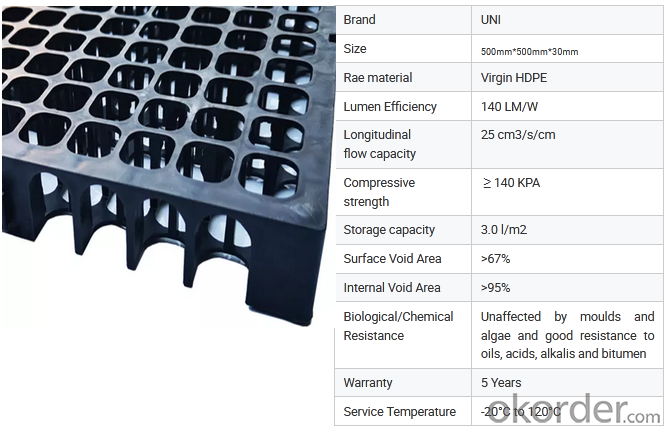
3. Features
1) High Compressive strength
2) Eco-friendly, waterproof polypropylene material
3) Lightweight and easily transportable
4) Thermal regulation
5) Low cost
6) Quick and easy to install
4. Pictures
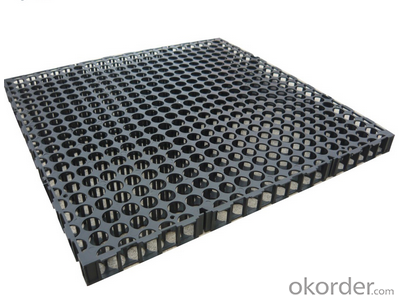


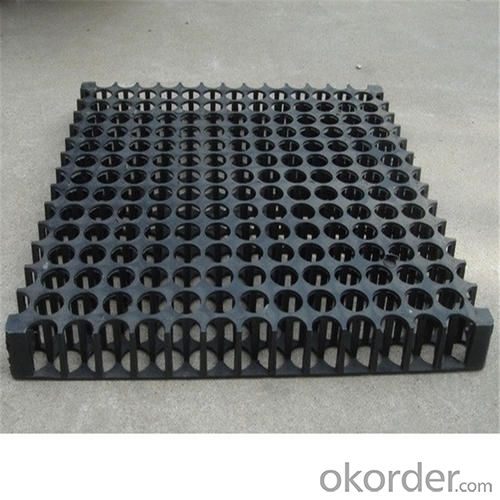
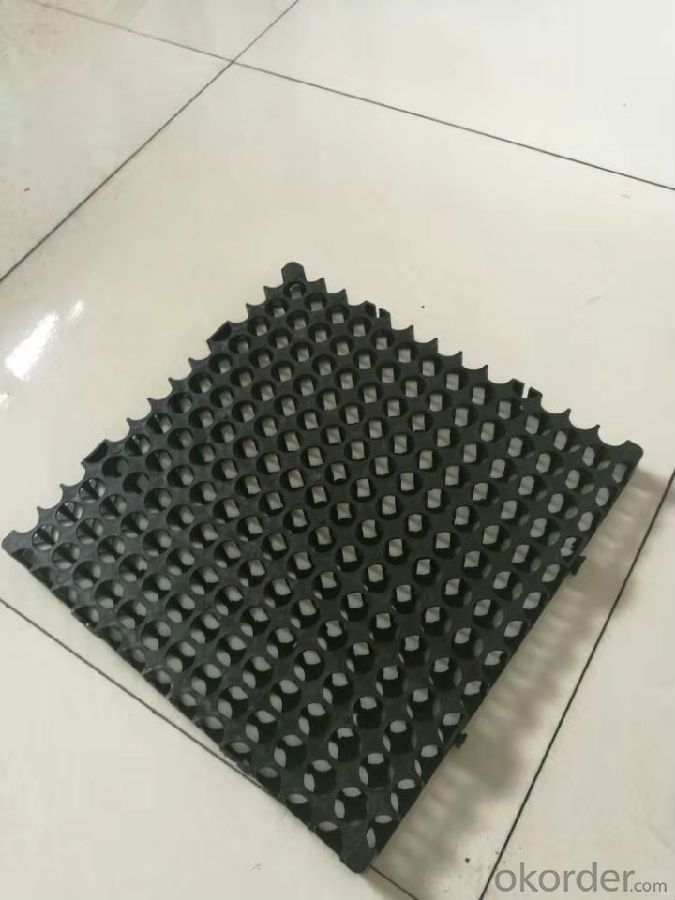
5. Package
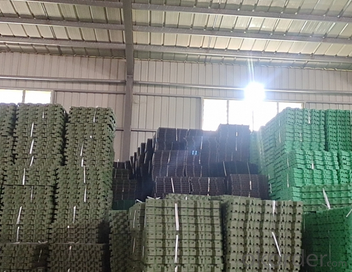
6. Application
1) Roof gardens,
2) podium landscaping,
3) retaining walls,
4) golf course,
5) sports fields,
6) bridge abutments,
7) underground car parks,
7. FAQ
Q1:Are you a factory or trading company?We are a factory.
Q2:How is the quality of your products compared with other supplier?
Our price is reasonable and worty quality.
Q3:Do you have quality warranty ?
Yes,we have quality warranty under normalconditions,pls contact us for details.
Q4:How do you make our business long-team and good relationship?
We keep good quality andcompetitive price to ensure our customers benefit.
- Q: Are earthwork products easy to install and maintain?
- Yes, earthwork products are generally easy to install and maintain. These products, such as retaining walls or drainage systems, are designed to be user-friendly and can often be installed with basic tools and equipment. Additionally, they require minimal maintenance once installed, usually only requiring periodic inspections and basic upkeep.
- Q: Are those issues focused?
- The first chapter of the basic properties of civil engineering materials Chapter II of the hard inorganic inorganic cementitious materials Chapter III of the cement Chapter IV of concrete
- Q: How do geosynthetic liners prevent leakage in reservoirs and ponds?
- Geosynthetic liners prevent leakage in reservoirs and ponds by creating a barrier between the water and the underlying soil. These liners are made from synthetic materials that are highly impermeable, such as high-density polyethylene (HDPE) or polyvinyl chloride (PVC). They are installed as a lining system, ensuring complete coverage of the reservoir or pond bottom and sides. The liner acts as a barrier, preventing water from seeping through the soil or rock layers underneath, thus effectively containing and preserving the water within the reservoir or pond.
- Q: What are the specific applications of geotextile bags in earthwork projects?
- Geotextile bags have several specific applications in earthwork projects. They are commonly used for erosion control, slope stabilization, and shoreline protection. These bags are filled with various materials such as soil, sand, or gravel, and are placed strategically to prevent soil erosion, provide stability to slopes, and protect shorelines from wave action. Geotextile bags are also used for dewatering purposes, as they allow water to pass through while retaining the solids. Overall, these bags play a crucial role in enhancing the performance and longevity of earthwork projects.
- Q: What is the purpose of using geocomposites in drainage systems?
- The purpose of using geocomposites in drainage systems is to improve the efficiency and effectiveness of the drainage system by providing filtration, separation, and reinforcement functions.
- Q: What are the benefits of using geogrids in road reinforcement projects?
- Geogrids provide numerous benefits in road reinforcement projects. Firstly, they improve the overall stability and strength of the road by distributing the load across a wider area, reducing the potential for rutting, cracking, and other forms of pavement distress. Secondly, geogrids enhance the lifespan of the road by preventing the lateral movement of soil and aggregate materials, which helps to maintain the integrity of the pavement structure. Additionally, geogrids can reduce the need for excessive excavation and costly materials, making road construction more cost-effective and environmentally friendly.
- Q: How do earthwork products enhance soil fertility?
- Earthwork products, such as compost and manure, enhance soil fertility by providing essential nutrients and organic matter to the soil. These products are rich in nitrogen, phosphorus, and potassium, which are vital for plant growth. When incorporated into the soil, earthwork products improve its structure, water holding capacity, and drainage, creating a more favorable environment for plant roots. Additionally, they promote the growth of beneficial microorganisms that break down organic matter, releasing nutrients for plants to absorb. Overall, earthwork products play a crucial role in replenishing and sustaining soil fertility, resulting in improved crop yields and healthier plants.
- Q: How do geogrids help in retaining wall construction?
- Geogrids help in retaining wall construction by providing additional strength and stability to the wall structure. They are typically placed within the soil layers, acting as a reinforcement component. Geogrids distribute the tensile forces exerted on the wall, preventing soil movement and potential wall failure. This reinforcement allows for the construction of taller and more stable retaining walls, enhancing their overall performance and longevity.
- Q: How are geosynthetic clay liners used in mining applications?
- Geosynthetic clay liners (GCLs) are commonly used in mining applications as a barrier system for containment and environmental protection. They are installed in areas where mining activities may generate contaminated water or leachates that can potentially harm the surrounding environment. GCLs act as a barrier to prevent the migration of pollutants, including heavy metals and chemicals, by providing an impermeable layer that prevents the leachates from reaching the ground or groundwater. Additionally, GCLs are used in the construction of tailings dams to minimize seepage and ensure the safe containment of mining waste materials. In summary, GCLs play a crucial role in mining applications by providing an effective and reliable solution for containment and environmental protection.
- Q: What are the benefits of using geosynthetic clay liners in stormwater retention ponds?
- Geosynthetic clay liners offer several benefits in stormwater retention ponds. Firstly, they have excellent hydraulic conductivity, allowing for efficient drainage and filtration of stormwater. This helps to reduce the risk of pond overflow and flooding. Additionally, geosynthetic clay liners are highly resistant to erosion, ensuring the stability and longevity of the pond. They also act as a barrier, effectively preventing the migration of pollutants and contaminants from the pond into the surrounding soil and groundwater. Overall, the use of geosynthetic clay liners in stormwater retention ponds enhances their functionality, sustainability, and environmental protection.
Send your message to us
Roofing Garden Plastic Drainage Cell Water Filter Board Drainage board
- Loading Port:
- Tianjin
- Payment Terms:
- TT or LC
- Min Order Qty:
- 5000 m²
- Supply Capability:
- 100000 m²/month
OKorder Service Pledge
OKorder Financial Service
Similar products
Hot products
Hot Searches
Related keywords
